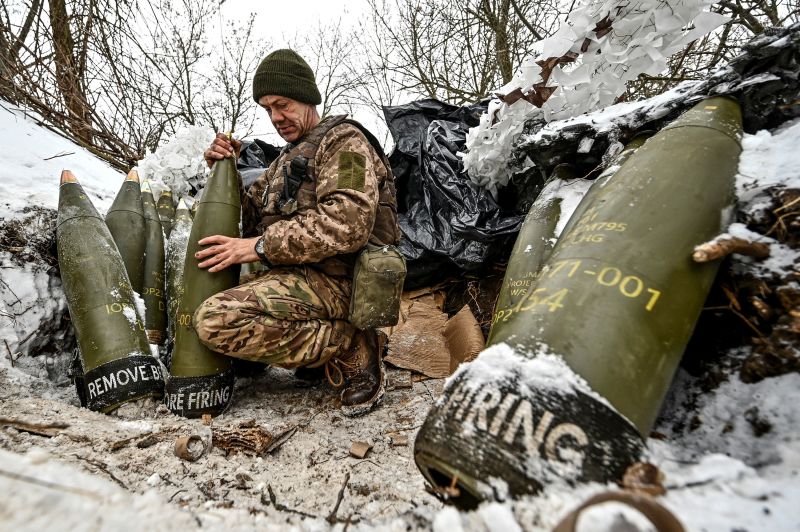
Ukraine's Current Position on the Battlefield: A Detailed Analysis

A comprehensive review of Ukraine's military situation and the ongoing conflict with Russia.
Intense Fighting in the Northeast
Ukraine's military officials and spokespeople recently provided a comprehensive assessment of the current battlefield situation, shedding light on the offensive Russian operations along much of the front line. The intensity of the fighting in the northeast, particularly in the Kharkiv and Luhansk regions, has been a focal point of concern. Reports indicate that Russian forces continue to press in the area, prompting Ukrainian forces to strategically withdraw from the village of Krokhmalne to occupy more advantageous defensive positions on higher ground.
A Ukrainian serviceman prepares 155-mm artillery shells near the front line in Zaporizhzhia, amid Russia's attack on Ukraine, on January 14, 2024.
The Army General Staff's report on its Facebook page detailed Ukrainian forces facing 13 attacks on the settlements of Tabaiivka and Stelmakhivka, emphasizing the enemy's focus on a large number of artillery attacks in an attempt to advance. These small settlements, which lie close to the Oskil river, were all liberated by Ukrainian forces in the late summer of 2022, following almost six months of Russian occupation.
The volatile situation in this region has prompted heightened vigilance and strategic maneuvering by Ukrainian forces, who continue to face significant challenges in maintaining control and defending their territory.
Increased Pressure in the Southeast
Further southeast, the area around Bakhmut has been the focus of increased pressure on Ukrainian forces. This region, previously targeted in Russia's winter offensive, continues to experience heightened tension and military engagement. Ukrainian forces report coming under increased pressure around the largely destroyed villages of Klishchiivka and Andriivka, with Sergeant Oles Maliarevych of the 92nd Separate Brigade highlighting the daily assaults and the amassing of enemy forces.
Sergeant Maliarevych also emphasized the growing threat posed by drones, noting the significant imbalance in drone capabilities between Russian and Ukrainian forces. The impact of drones equipped with night vision has become a major concern for Ukrainian forces, adding a new dimension to the challenges they face in this region. The easternmost edges of Ukraine’s territorial gains around Bakhmut, reclaimed as part of the counteroffensive, remain under constant threat from Russian forces.
The evolving tactics and technological advancements employed by the Russian forces present a formidable challenge for Ukrainian troops, who are adapting to the changing dynamics of modern warfare in their ongoing efforts to defend and secure the region.
Challenges and Strategic Assessment
The sense of Moscow’s troops aiming to regain the small pockets of territory recaptured by Kyiv since June has been highlighted by army spokesmen with responsibility for operations in various regions. The Zaporizhzhia region, in particular, has witnessed an increase in offensive and assault operations by Russian forces, prompting concerns about their attempts to recapture lost ground.
Efforts by Ukraine to push south from Orikhiv towards Tokmak, seen as a crucial step in breaking Russia’s land corridor to Crimea, faced significant challenges and only made limited progress. The spokesman for the region emphasized the increased activity of the invaders, with daily combat engagements reaching a staggering 50. The enemy's efforts to recapture lost ground in the Zaporizhzhia region have further intensified the ongoing conflict and raised concerns about the security and stability of the area.
The strategic assessment of Ukraine's military situation underscores the complex and evolving nature of the conflict, as Russian forces continue to employ aggressive tactics and advanced technology to challenge Ukrainian defenses. The resilience and determination of Ukrainian forces in the face of these challenges reflect their unwavering commitment to safeguarding the sovereignty and territorial integrity of Ukraine.
This March 12, 2022, aerial image shows the Pentagon (US Department of Defense) in Washington, DC. (Photo by Eva HAMBACH / AFP) (Photo by EVA HAMBACH/AFP via Getty Images)















